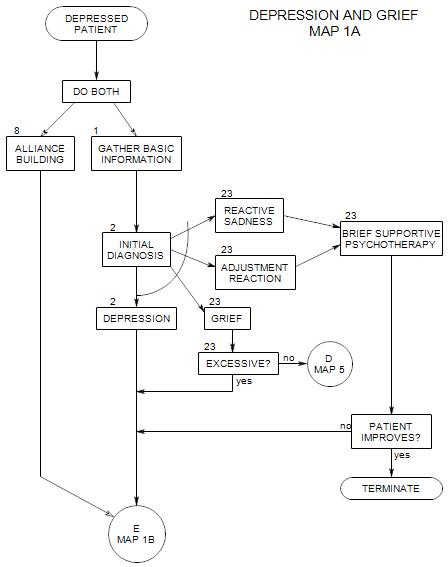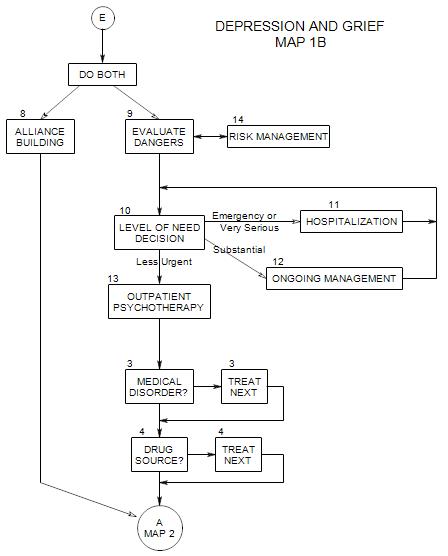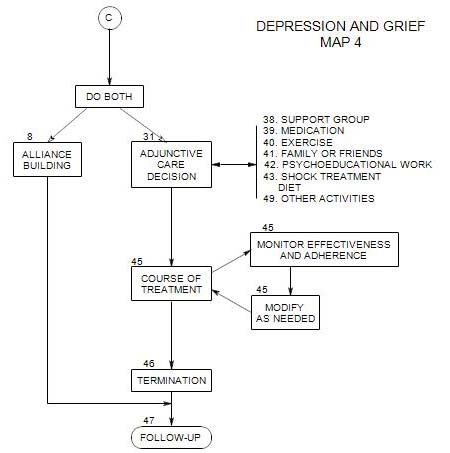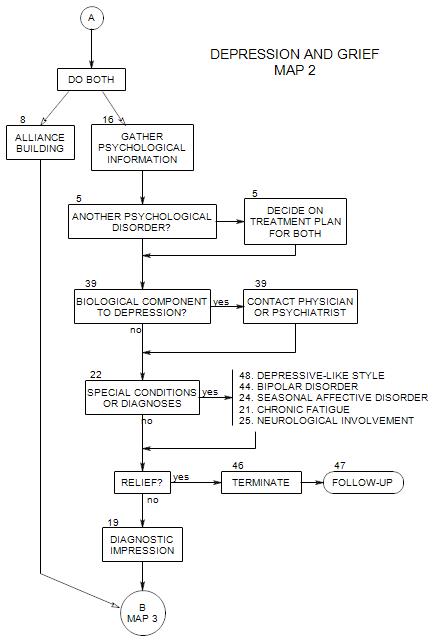
SECTIONS: 5 | 8 | 16 | 19 | 21 | 22 | 24 | 25 | 39 | 44 | 46 | 47 | 48
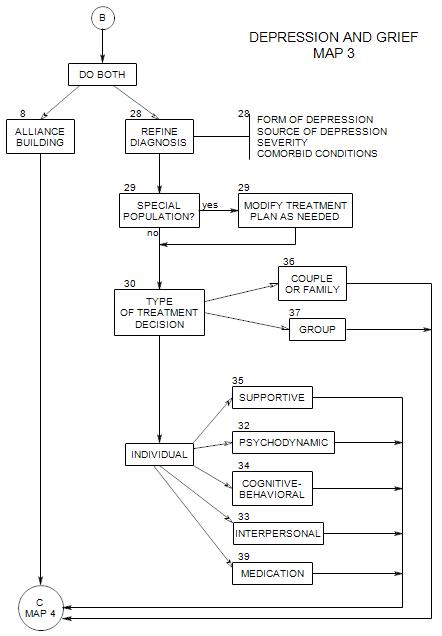
SECTIONS: 8 | 28 | 29 | 30 | 32 | 33 | 34 | 35 | 36 | 37 | 39
-
Follows Section 7 on Map 5
As with any psychotherapy, we look for progress in the reduction of symptoms and re-engagement of the patient in normal activities of living. The usual treatment issues to be considered in looking for improvement are listed at the start of Section 6. Commonly, symptom relief can take from a couple of months to a year or more.
Even when the person is doing well, it can be helpful to re-evaluate the relative helpfulness of individual psychotherapy and the various adjunctive approaches hi/she is making use of. It may be that the other approaches are especially important – even more important than individual work. Because normal grief is self-limiting and many patients are free of serious psychopathology, an increasing emphasis on the person’s other involvements may lead to a rapid recovery.
When the person is improving normally and moving on, there will come a time to terminate individual psychotherapy.
If the person is not improving, we need to re-evaluate the treatment, to see what can be done that will be more helpful. A therapeutic focus on different issues [Section 6] can be helpful. The person may need a change of adjunctive care [Section 7]. Finally, if these changes are not effective, we may need to reconsider a return to diagnosis, starting on Map 1B.
